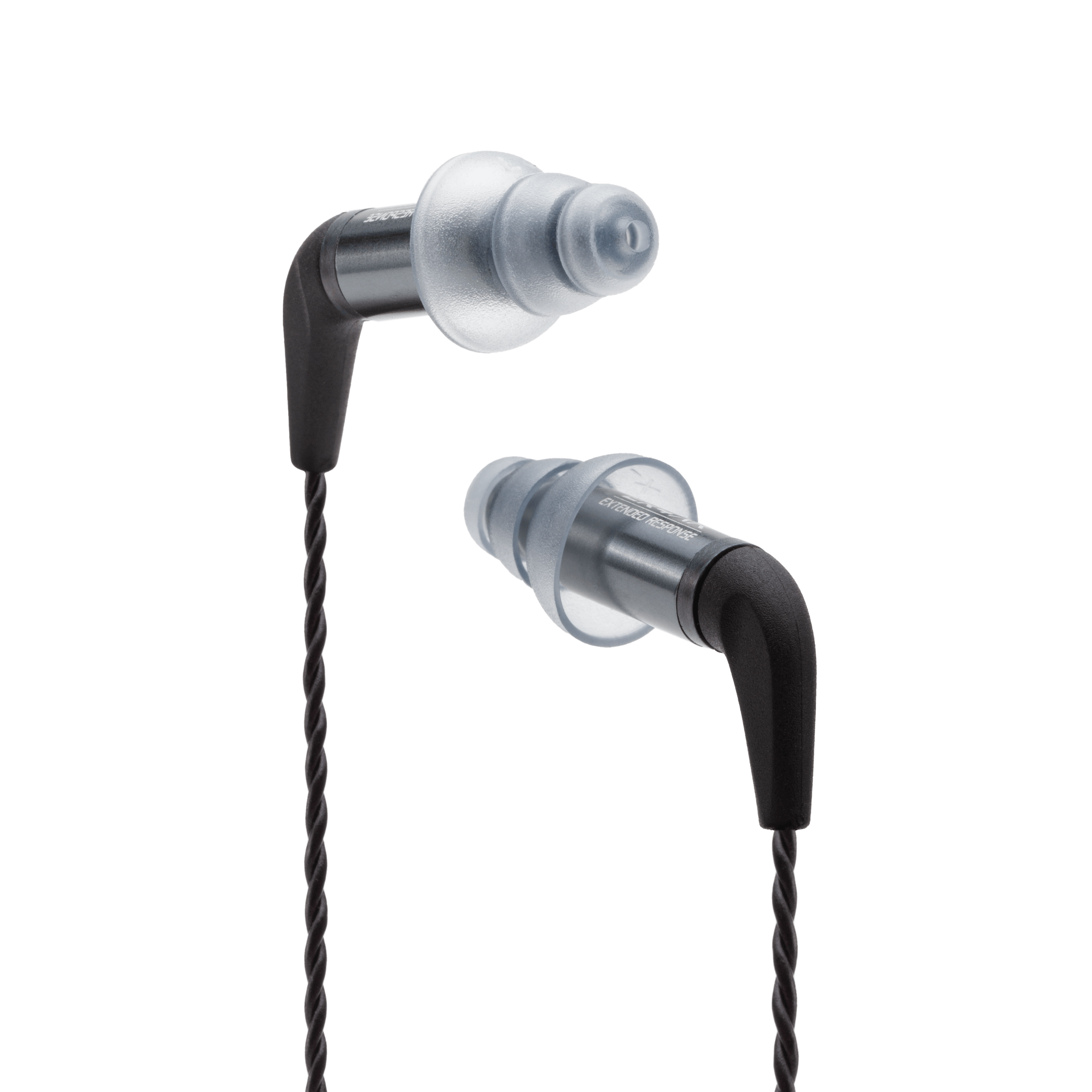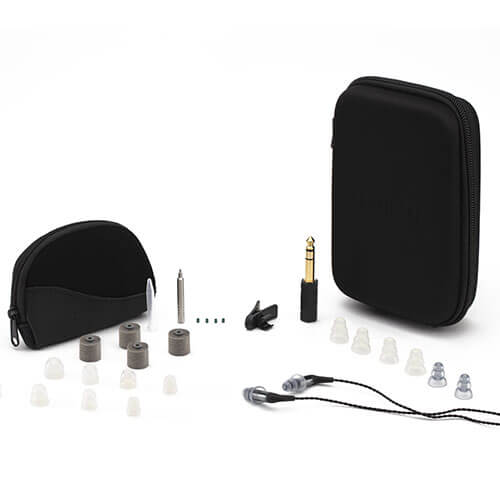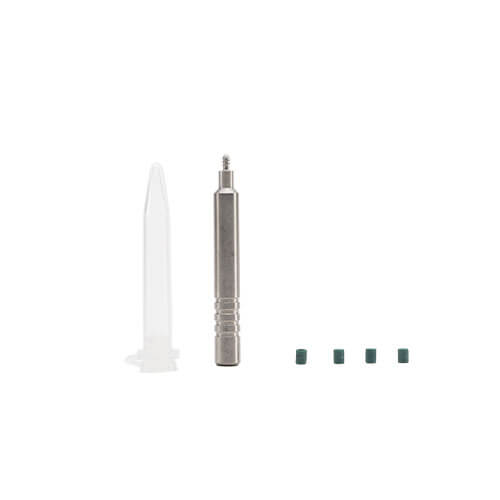Beschrijving
Technical Specs
- Frequency Response: 20 Hz – 16 kHz
- Transducers: Single high-performance balanced armature per channel.
- Noise Isolation: 35dB using silicone ear tips, 42dB using foam ear tips
- Impedance: 45 Ohms @ 1kHz
- Sensitivity: 98 dB @ 1kHz, 1mW
- Maximum Output (SPL): 122 dB
- Cable: Detachable reinforced, twisted 5 ft with MMCX connectors
- User Replaceable ACCU-Filters: Yes
- Warranty: 2 Years
- Custom-Fit Option: Yes
What’s In the Box?
- In Ear Monitors
- Detachable 4 ft. cable with 3.5mm gold plated stereo plug
- Assortment of eartips: 4 Dual Flange Silicone Pairs: S, M, L, XL. 2 Triple Flange Pairs: Standard and Large. and 2 Foam Pairs: Standard
- Filter removal tool and replacement filters to protect the BA drivers from ear wax
- Shirt clip
- Zippered storage case
- Channel-Matching Compliance certificate
Which ER4 is right for you?
Both ER4 models, the ER4SR and ER4XR, use the same Balanced Armature (BA) drivers. The only difference is the tuning of the lower (bass) frequencies. The ER4SR, being the “reference” model, is tuned to be as precise and flat as possible. The ER4XR, being the “fun” model, is tuned with added bass. As you can see from the frequency response graphs below, ER4XR adds 1-2dB to the mid-bass frequencies (below 200Hz) and 3-4dB to the lower-bass and sub-bass (below 100Hz). The rest of the frequencies are practically identical. ER4SR is ideal for sound engineers and mixing technicians who must have a precise and accurate sound reproduction across all frequencies. ER4SR is the IEM of choice for audiophiles and consumers who like to listen to their music exactly the way it was recorded. ER4XR with its tastefully added bass is favored by audiophiles and consumers who prefer a little extra bass presence when enjoying their music. This model is not bass heavy by any means.
Frequency response graphs and Etymotic’s target:
Etymotic’s target frequency response graph represents a “perceptibly flat” frequency response. Our goal is to have a flat frequency response curve when the music notes hit your eardrums. To achieve that, we need to account for the resonance inside the average ear canal, since IEMs bypass the outer ear structure. The result is the need for higher SPL in the 2-5k region (lower treble) for compensating said resonance. That is the reason for the “hump” in that region. The target curve that Etymotic is using for tuning our IEMs differs slightly from the Harmon preference curve. It was developed in-house more than 20 years ago, leveraging on our human hearing expertise and acoustics research.
Accurate Earphone reproduction
When tuning in-ear monitors to accurately reproduce a recording of a live performance, our goal is for the sound hitting the eardrums to be identical to that at the original performance. To achieve this, the acoustic properties of the ear must be factored in. The acoustic resonance and horn effects of the ear change a flat audio signal entering the open ear into sound with a (2700 Hz) high-frequency boost, which is the same response heard at the eardrum in a typical ear. That is the reason for the “hump” in the frequency response graph below, which assures the eardrums perceive a perfectly flat frequency response for all frequencies.



